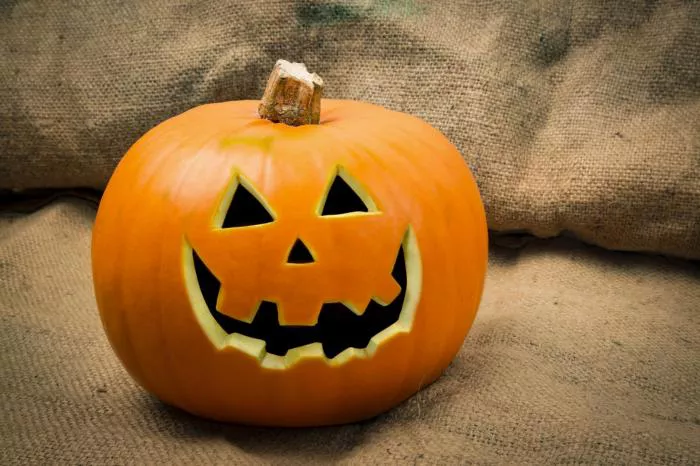As Halloween draws near, many families embrace the festive spirit by displaying pumpkins on their porches, doorsteps, and backyards. This tradition is especially popular among families with young children, who enjoy crafting Jack-o’-Lanterns or creating no-carve decorations. However, while these pumpkins may seem harmless and festive, they can inadvertently attract unwanted pests to your home. Pest control experts warn that leaving carved pumpkins outdoors can be a magnet for various critters, especially as they begin to decompose.
The Risks of Decaying Pumpkins
According to Joshua Houston, a pest infestation expert at Household Quotes, the joy of pumpkin carving can come with hidden dangers. “Pumpkin carving is a Halloween tradition that could be causing more harm than good,” he states. The decomposition process of pumpkins emits odors that can attract a variety of animals, including rodents. “The smell of slowly-rotting pumpkins is something that will entice rats and mice to your front porch or backyard,” Houston adds.
As organic matter, pumpkins naturally draw pests, which can lead to potential infestations if left unchecked. “Be safe by always inspecting the external areas of your home where you plan to bring pumpkins inside,” Houston advises. As the weather cools, pest infestations can become more common, making it vital for homeowners to be vigilant.
Rodents: Unwelcome Guests
Rodents are one of the primary concerns when it comes to pumpkins left outdoors. Their attraction to pumpkins, particularly carved ones, can quickly escalate into a serious problem. Ryan Fitzgerald, owner of Raleigh Realty, emphasizes the need to eliminate any factors that may lure rodents to your property. “Rodents will enjoy feasting on tasty pumpkins, especially if carved and open,” he warns.
To prevent rodent infestations, homeowners should conduct a thorough inspection of their property for any holes, gaps, or entry points. Sealing these openings with caulk or weather-stripping products can create a barrier that deters rodents from entering. “Blocking points of entry is crucial,” Fitzgerald advises, “especially in the foundation, siding, and doorways.”
Squirrels: The Mischievous Scavengers
While they may appear cute, squirrels can wreak havoc on your Halloween decorations. Known for their scavenging behavior, squirrels are attracted to the soft flesh, tough rind, and seeds of pumpkins. Fitzgerald states, “Squirrels are particularly drawn to pumpkins, making it essential to squirrel-proof your decorations.”
To keep squirrels at bay, homeowners can use several strategies. Squirrels are sensitive to strong scents, so natural repellents like peppermint essential oils can be effective. Another option is to create a barrier using coffee grounds around your pumpkin display. However, these natural deterrents must be refreshed every few days to maintain their effectiveness.
An innovative solution involves using motion-activated water sprinklers. These devices provide a harmless but startling shower to any furry visitor that approaches the pumpkin display. Additionally, placing pumpkins off the ground makes them less accessible to squirrels, helping to keep your decorations intact.
Fruit Flies: The Tiny Invaders
In addition to larger pests, smaller insects like fruit flies pose a significant threat to your pumpkins. These tiny insects are particularly attracted to decomposing organic matter, making them likely to swarm around pumpkins left outside. “Fruit flies will not only cover the surrounding area but also lay eggs inside the pumpkin, leading to an increase in pest populations,” warns pest control experts.
If pumpkins are positioned near a door or entrance to your home, fruit flies may easily find their way inside. To combat this issue, several natural methods can effectively eliminate fruit flies. One popular technique involves creating an apple cider vinegar trap. To set this up, fill a small bowl with apple cider vinegar, cover it with plastic wrap, and secure it with an elastic band. Small holes poked in the top will allow fruit flies to enter, attracted by the vinegar’s strong scent.
Alternatively, fruit flies are also drawn to the aroma of fermenting beer and wine. Pouring a little beer or wine into a saucer and placing it next to your pumpkins can also help trap these pests. If these methods fail, investing in commercially available fruit fly traps from hardware stores or online retailers may be a viable solution.
Prevention is Key
To avoid pest infestations during Halloween, it is crucial for homeowners to take proactive measures. Before decorating with pumpkins, consider the potential risks and implement strategies to minimize attraction to unwanted pests.
After the festivities, promptly disposing of carved or decaying pumpkins is essential. Leaving them outside for extended periods not only attracts pests but also poses a sanitation risk. Regularly inspecting your property for entry points and maintaining clean outdoor spaces will help prevent infestations throughout the colder months.
Conclusion: Enjoy the Festivities Responsibly
Halloween pumpkins can add festive charm to your home, but they also carry the risk of attracting unwanted pests. By understanding the potential dangers posed by rodents, squirrels, and fruit flies, homeowners can take steps to protect their properties.
As the season approaches, families can still enjoy the fun of pumpkin carving and decorating by employing preventative measures. With a little planning and care, you can keep your home pest-free while fully embracing the Halloween spirit. Enjoy your festivities, but remember to stay vigilant against those unwelcome visitors!
Related topics:


